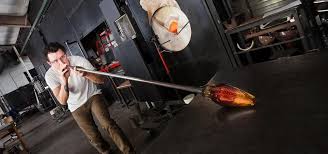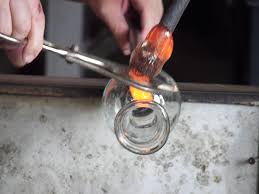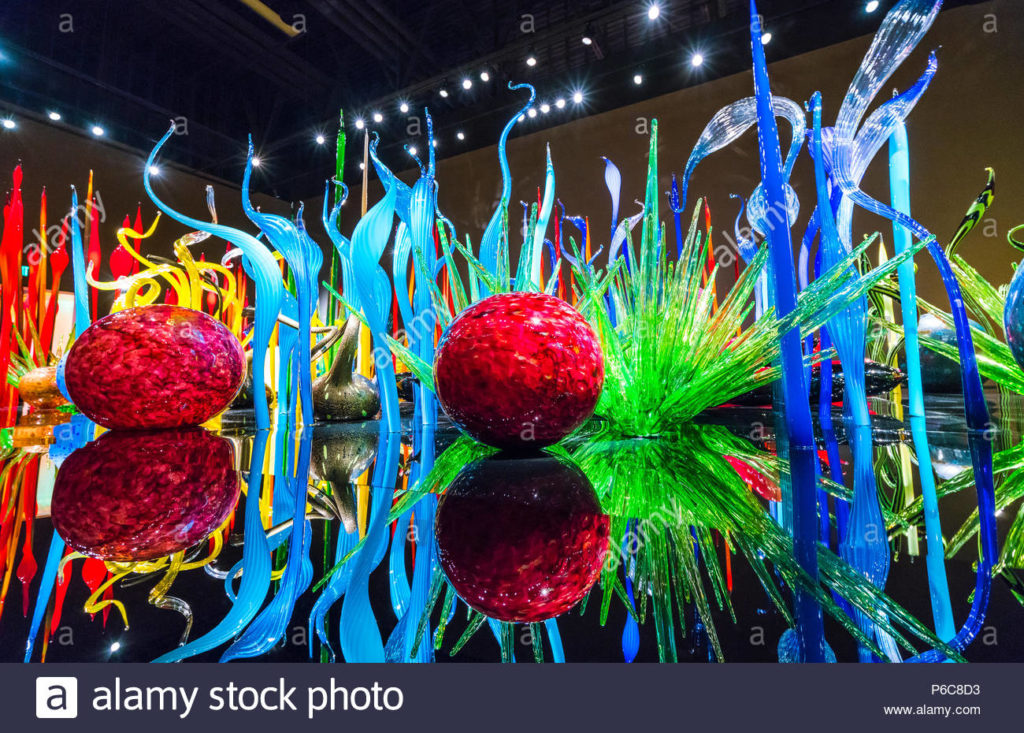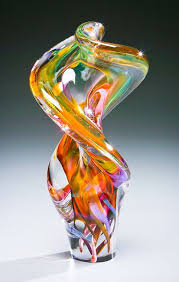
Personally, I don’t think there is any more stunning work of art than blown glass. If art is meant to make you feel something, then blown glass sparkles in that category. Describing how it makes me feel is not easy. The visual impact puts it on an ethereal plane. A gorgeous piece with its sleek lines and translucent colors might have come into material existence through a portal from another realm, its unspeakable beauty too lovely for this coarse world. It can produce a sense of bliss. I’m practically giddy if it touches me deeply enough.
In this post, we’re going to learn what blown glass actually is, how it’s made and what you can do to try your hand at it. Plus, we’ll get a look at a few spectacular glass sculptures.
Ingredients
Glass has three main ingredients: Silica, which is found in sand; sodium carbonate; and lime. There are some less important and some optional chemical elements that can also be added to enhance the glass, but that’s the primary makeup.
The recipe for glass was first discovered perhaps as early as 3600 BC. There’s conflicting information on this, but somewhere between 3000 BC and 4000 BC seems accurate. Most agree it was probably first created in Egypt, although Syria is another possibility.
The colors in glass usually come from metal oxides, chlorides or sulfides. For example, cobalt oxide lends a blue or violet hue. Interestingly, gold chloride makes for a red color and for yellow, cadmium sulfide is added. When a glassblower wants to add flecks of color to whatever color the existing glass has, he or she peppers in some colored crushed glass to the mix which is melted into the other ingredients. There are a number of other options available, including some fluorescent colors.

The Process
The equipment needed consists of a furnace that can reach temperatures up to 2000 degrees Fahrenheit, a crucible, a smaller furnace known as the glory hole where the soft glass can be shaped, an oven where rods known as punties and other pipes are kept hot, and an annealing oven where newly formed glass can be cooled slowly to prevent breakage of the new sculptures.
Those who make these creations deserve to be called artists or sculptors, so I will refer to them as such. To start the process, they insert the punty into a furnace and crucible, gathering a mass of molten glass. The punty is also the blow pipe. The sculptor rolls the glass on a steel table to mold it into a cylindrical shape. Before it can harden, the glass is then inserted into the glory hole, turning it all the while. There will be multiple trips to the glory hole to keep the glass malleable as it is being formed as designed.
The piece is rolled into a pile of small or even powdered colored glass to give the new glass color as it’s being shaped. The added colored glass, now stuck to the new piece, is melted in place as all of it is placed back in the glory hole. The table is used repeatedly to keep working the glass into the desired shape. The actual glassblowing through the blow pipe is part of this shaping process. Opening a bubble is important to shaping the glass and the glassblowing will be alternated with trips to the glory hole as needed.
There are many more details to the process, but not all can be covered here. One key step, though, is the separation of the glass from the pipe. As the glass blower seated at a bench temporarily stops turning the piece, another portion of molten glass is attached to the other end, using another punty. At the right moment, the artist raps the blow pipe and the molten glass breaks away, leaving the original piece attached to the second punty. Another piece of glass is attached as a makeshift handle. More shaping occurs and finally the sculpture is detached from the handle with another whack of the punty. The blown glass falls into a box with lots of fire blankets for a soft landing. After many hours of cooling in the annealing oven, the work of art is officially complete.

How to Learn Glassblowing
To do this yourself, you will first need to find a place with the specialized equipment mentioned above. I would suggest you find a class on glassblowing and get properly trained. They will have what you need to learn on and the skill to teach you. If you happen to have all the equipment, I would still recommend getting a professional to show you how to do this delicate and potentially dangerous work. I have found a good reference on Wikihow that gives an illustrated tutorial on the subject. Here’s the URL: https://www.wikihow.com/Blow-Glass
Blown Away
For more information and an entertaining reality show, check out Blown Away on Netflix. It’s great for watching how it’s done, various techniques and some creative ideas. Enjoy the journey!





